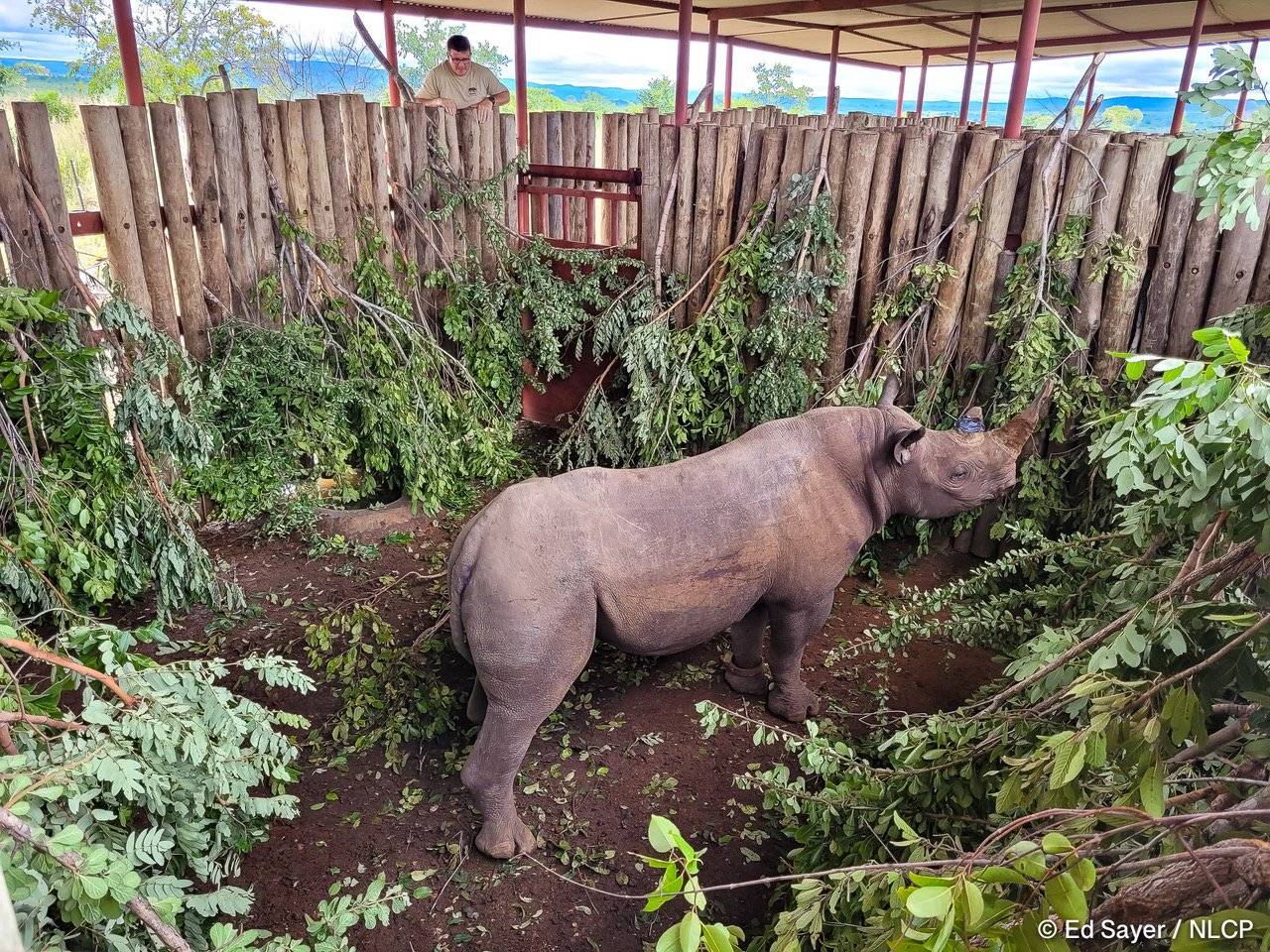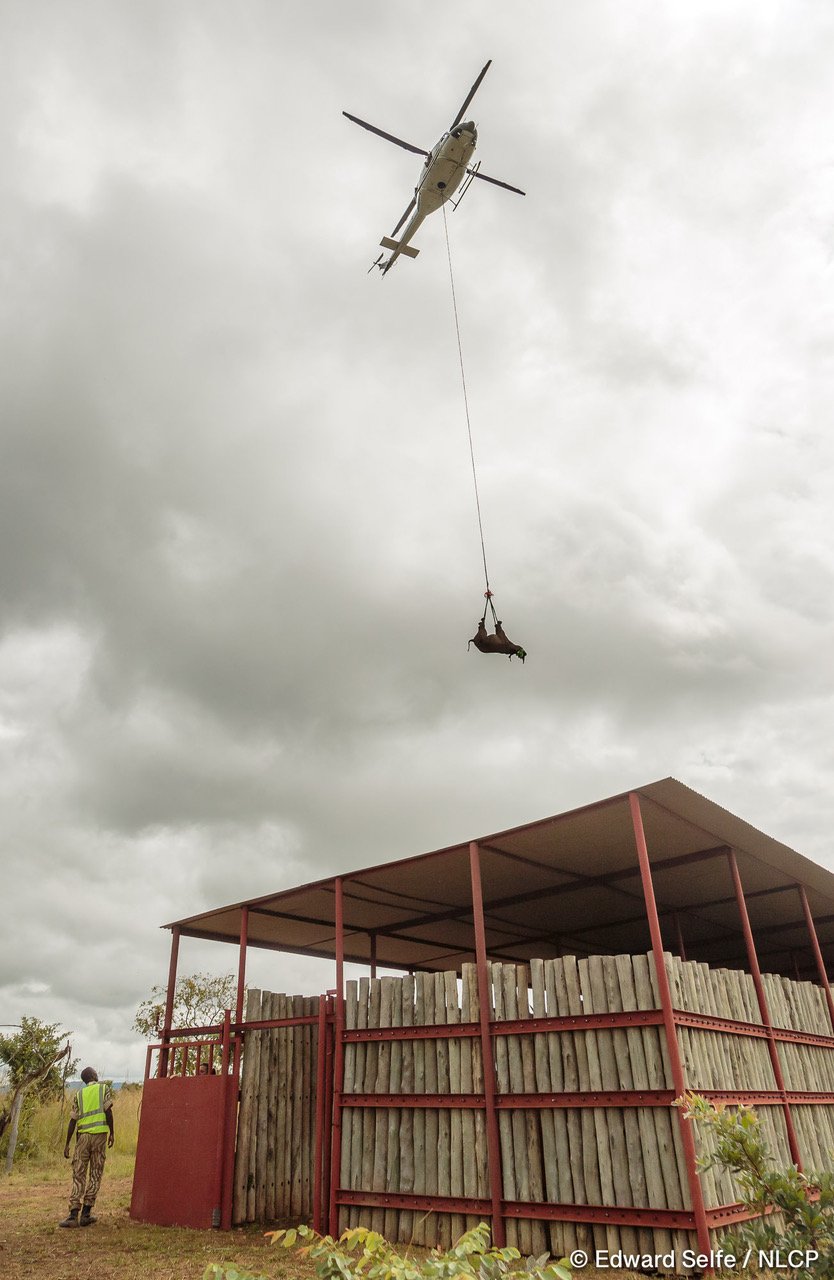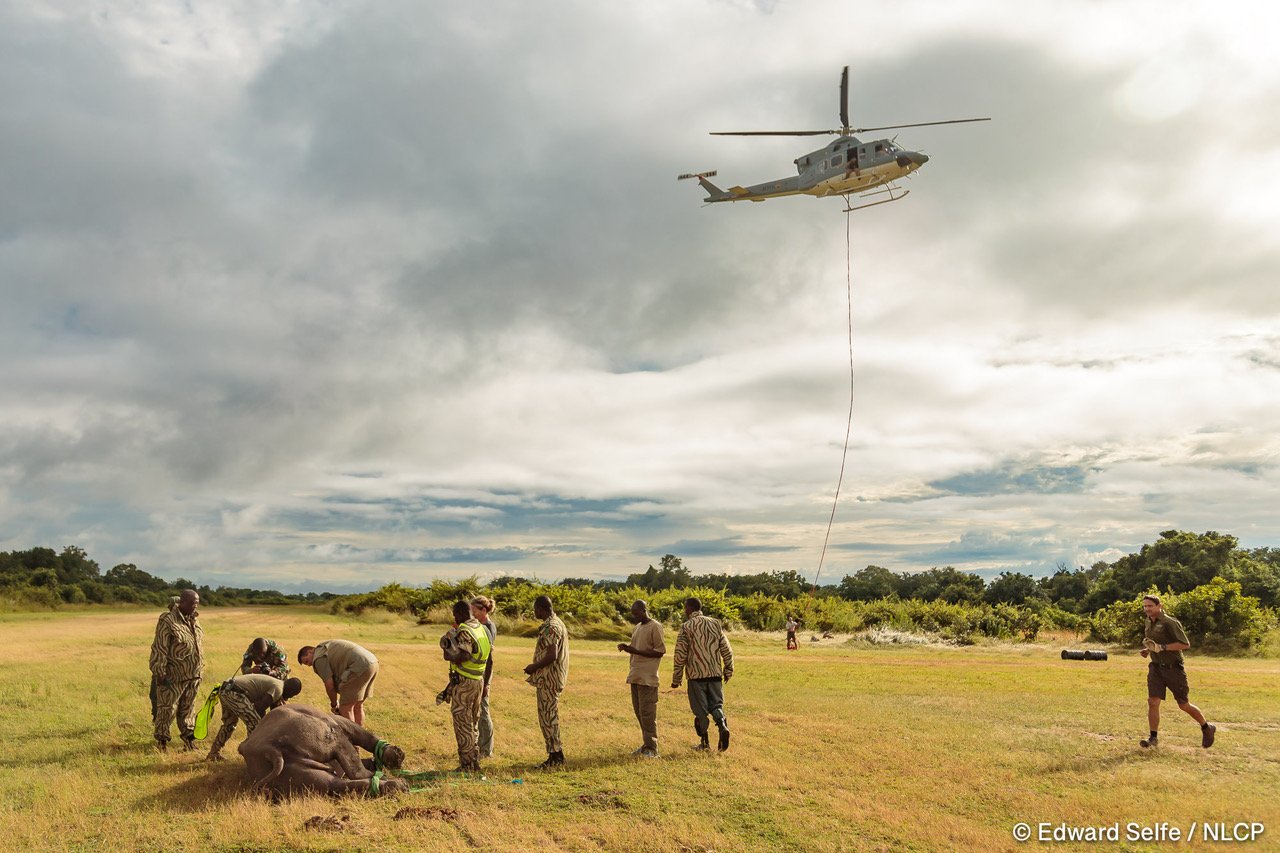North Luangwa Conservation Programme Black Rhino Rescue
This month we're featuring content from Ed Sayer of the North Luangwa Conservation Programme. Read on for information about the organization's Black Rhino Rescue program.
Zambia was historically home to the third largest black rhino population on the continent, but were poached throughout the 1980s and declared nationally extinct in 1998.
In 2001, the North Luangwa Conservation Programme (NLCP) – a 36-year partnership between the Department of National Parks and Wildlife (DNPW) North Luangwa Area Management Unit and the Frankfurt Zoological Society (FZS) – embarked on an ambitious project to re-introduce black rhinos to Zambia, and the first animals arrived in 2003. The project has been successful, the population has grown, and is now classified as an IUCN Key 2 population.
However, a successfully breeding population is not without its challenges, and rhinos are under severe threat for the illegal trading of their horns and are a target species for poaching gangs and criminal cartels.



In 2014 NLCP established the Rhino & Elephant Protection Unit (REPU) – a team of highly trained male and female wildlife officers, whose function is to secure the northern Luangwa ecosystem. While REPU does its very best to safeguard the black rhinos of North Luangwa National Park (NLNP), there have been several break-outs by sub-adult animals (mostly males), who have been pushed away by dominant males. To date, escapees have been tracked, secured and if necessary recaptured and transported back to NLNP.
In 2021 one young black rhino broke out, but instead of going a retrievable distance, this male settled approximately 220km away in a very remote area of the Luangwa valley with no road access, and a long way outside REPU’s operational area.
To secure the walkabout male, REPU mounted a security campaign unlike ever before, in cooperation with the DNPW South Luangwa Area Management Unit. With surveillance support from the Conservation South Luangwa/Zambia Carnivore Programme aircraft, the rhino was safely protected in a high risk area while resources could be mobilised and a team assembled to attempt a recapture and rescue.
With almost no road access into the area, and the oncoming rainy season hampering mobility across the valley, getting in and out of the area to exchange security and protection teams was an arduous task and drove home the harsh reality that a road rescue was out of the question.
NLCP looked outwards for support and advice as, in Namibia and South Africa, conservationists have pioneered ‘slinging’ rhinos from large helicopters; but this has never been attempted in Zambia and no one anywhere has tried it over such a long distance. It was, however, the only option on the table as the rhino would be very vulnerable to poaching if he remained where he was. Over the next few months NLCP gathered advice, equipment and expertise from a multi-disciplinary team to rescue the rhino. On April 8th this year, this team – DNPW, Zambia Airforce (ZAF), FZS, CSL/ZCP, Ultimate Heli, Parsons Aviation and Dr Markus Hofmeyr from the Oak Foundation / Rhino Recovery Fund – embarked on this unprecedented rescue mission.
Following the expert facilitation of Niner Juliet Logistics, the rescue team met for a field briefing and a restless but comfortable night generously hosted by the Bush Camp Company in Mfuwe. Before dawn the next day, under the watchful gaze of a pack of nearby wild dogs, the team gathered to prepare for the day ahead and with spirits high, the fleet took off.
The rhino was located and darted using Parsons Aviation Bell 206 chopper piloted by Harmand van Tonder, with DNPW Rhino Monitoring Unit Commander Paimolo Bwalya on board, and DNPW Senior Veterinarian Jackson Katampi and rhino specialist vet Dr Markus Hofmeyr. Overhead the entire operation was coordinated from the FZS-NLCP Aviat Husky piloted by FZS Country Director Ed Sayer, with CSL CEO Rachel McRobb on board; and additional top cover surveillance was provided by CSL/ZCP’s Cessna 180 piloted by Gareth Brockhuizen with DNPW Senior Wildlife Warden Lewis Daka and Area Warden Bovax Kachali on board.
Once immobilised, the vets landed to stabilise the rhino while the Bell 412 chopper piloted by ZAF Lt Colonel Johnson Sakuya and Major Kabwe Mwenya accompanied by Ultimate Heli slinging experts Philip van Coller and Buzz Bezuidenhout were directed in to attach the sling and begin the lift back to NLNP.
